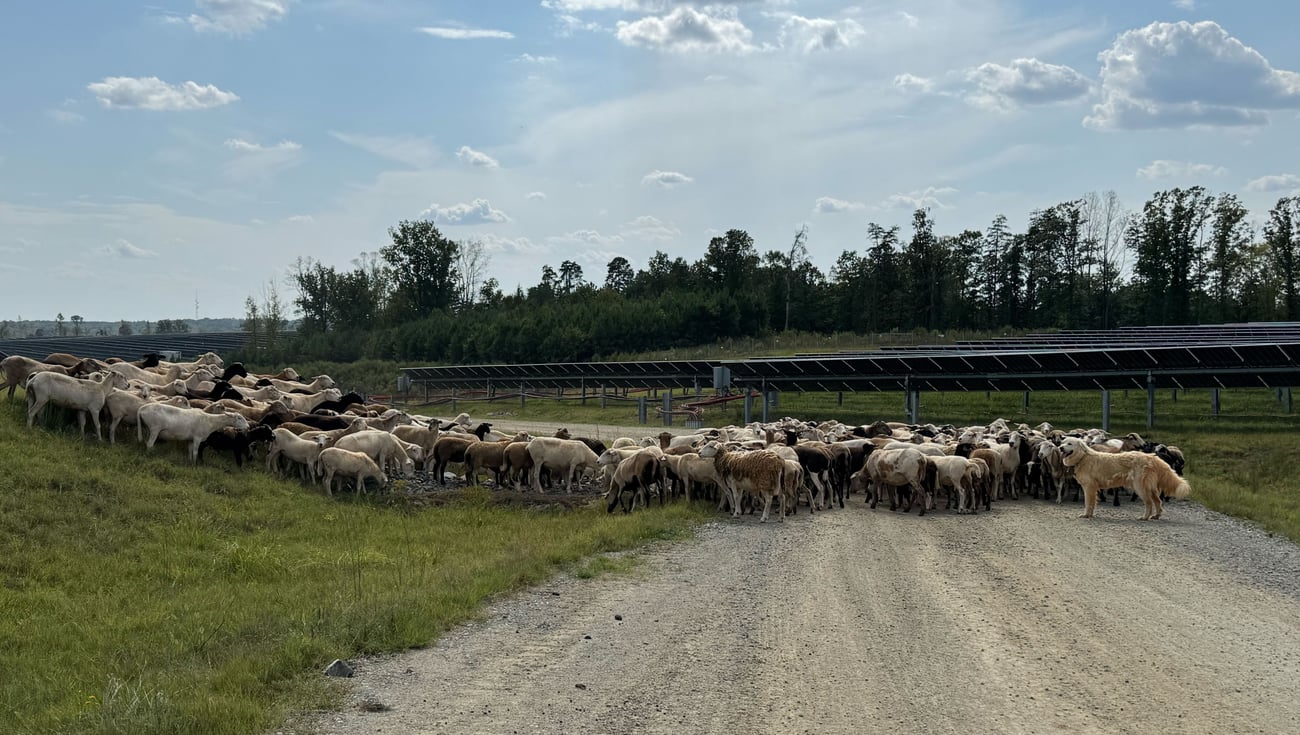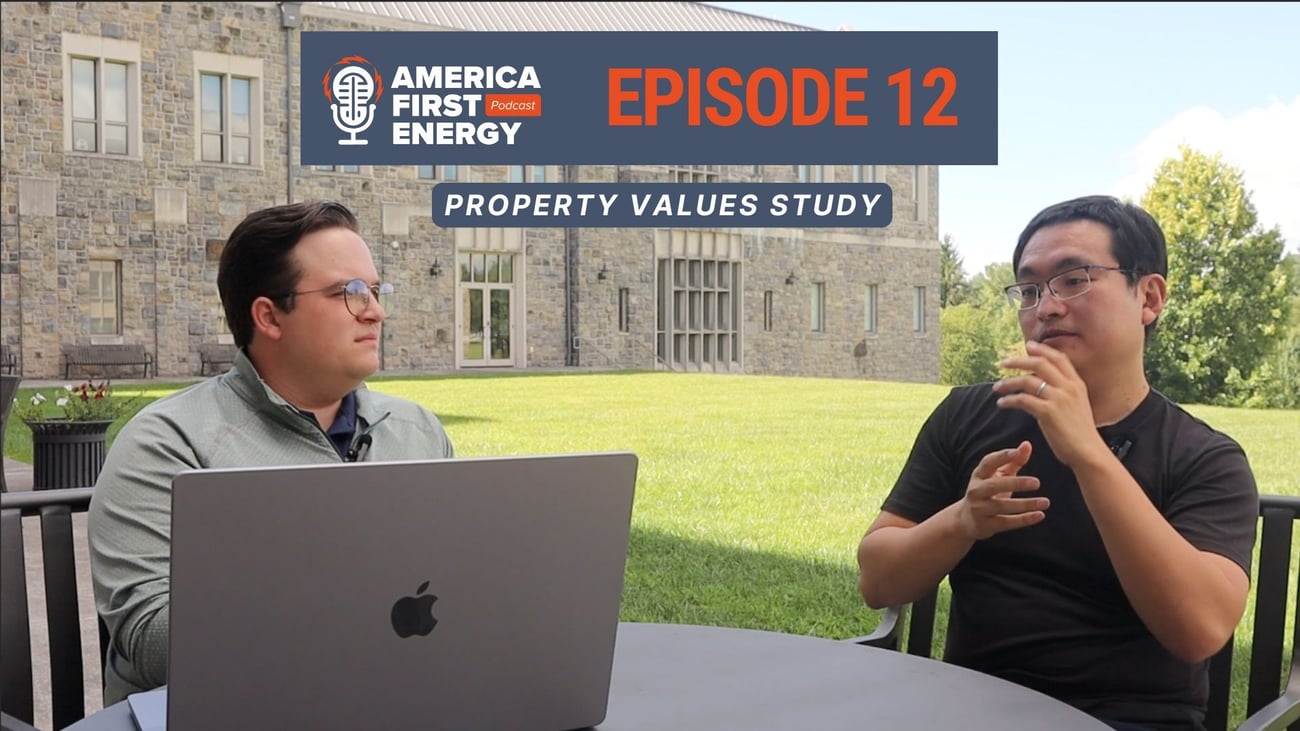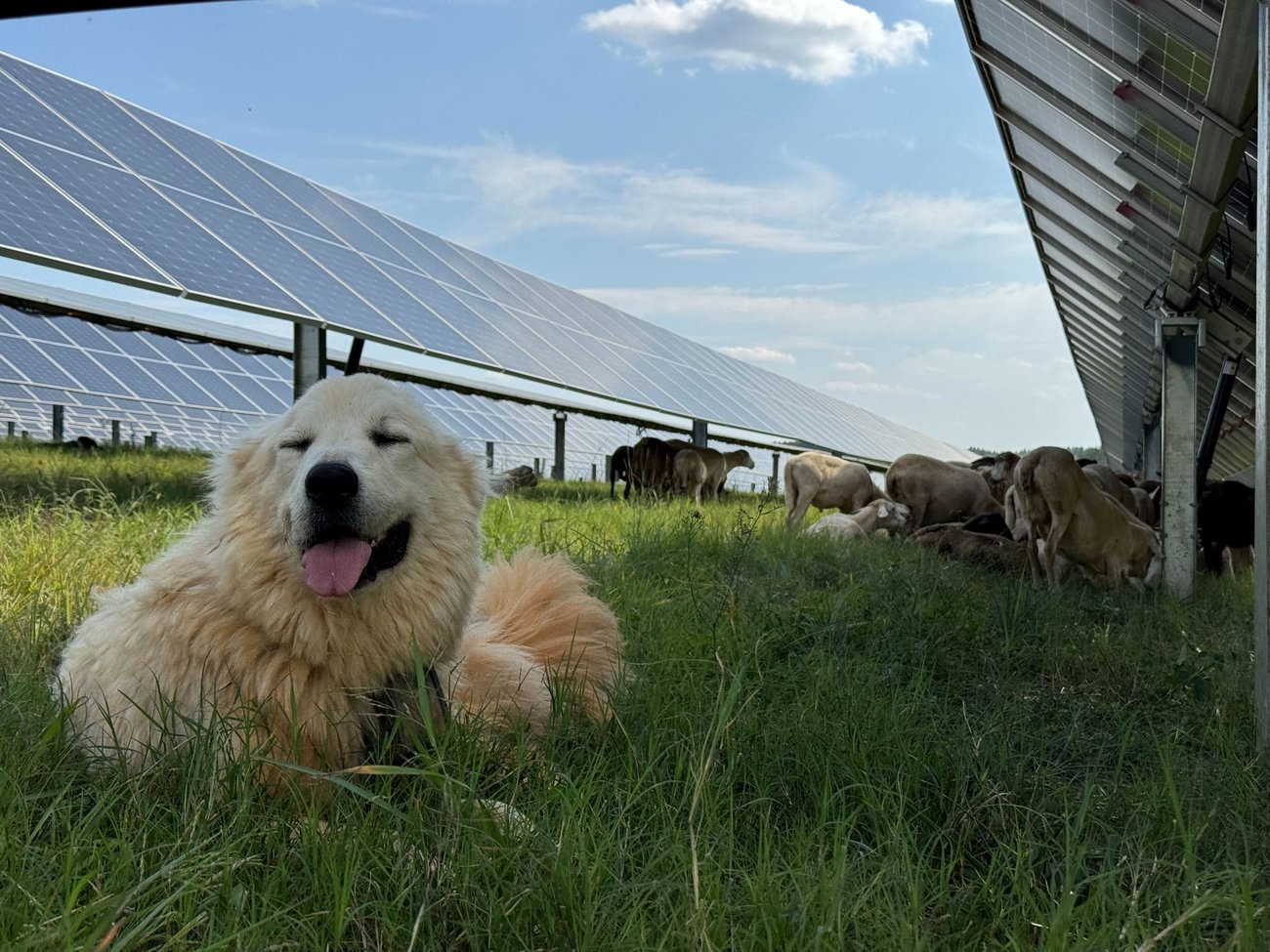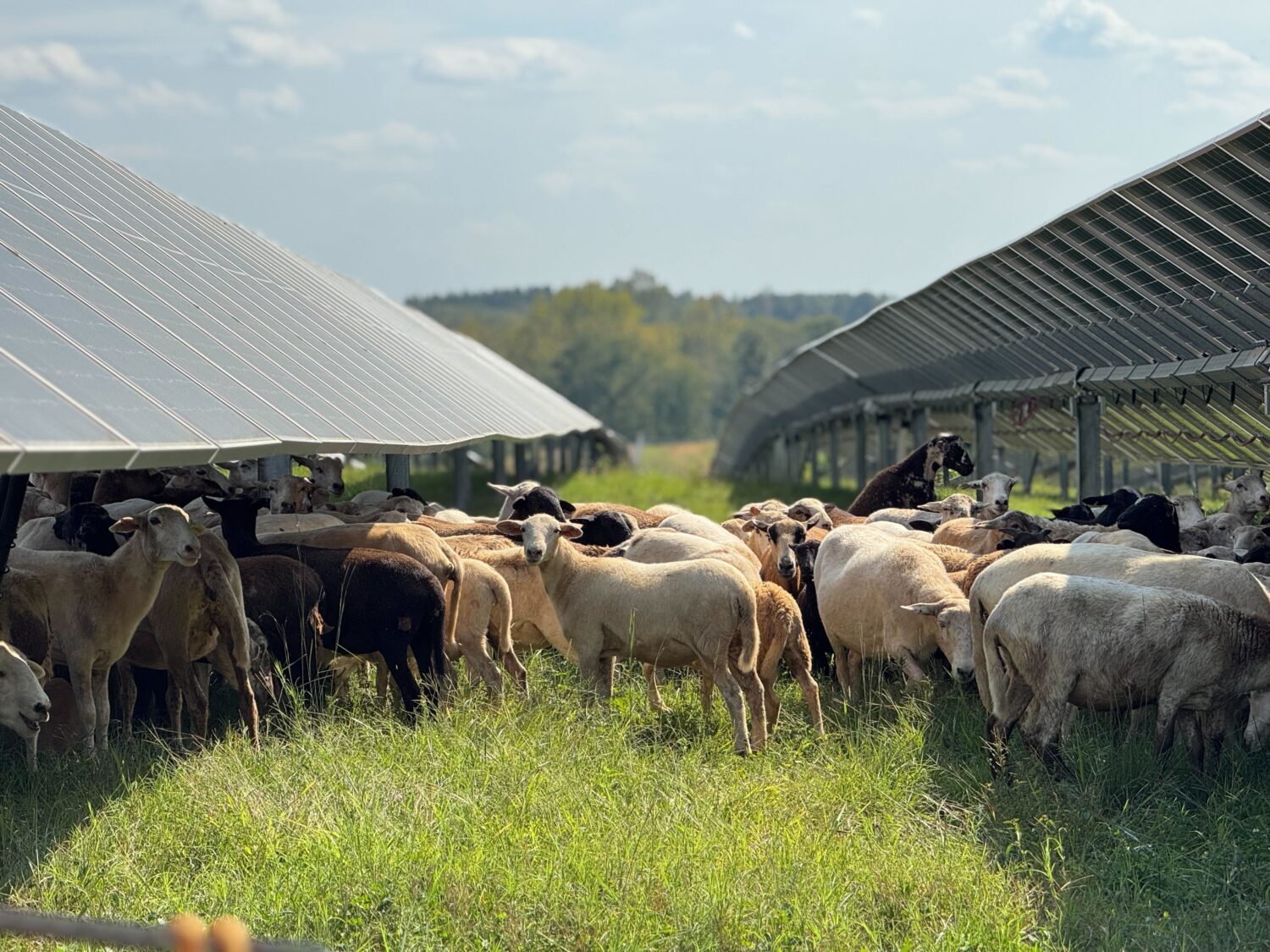|
|
|
Happy Friday!
September 26th, 2025
|
|
|
|
This week, the Energy Right team was engaging in all things agriculture! We attended a workshop hosted by the American Solar Grazing Association which included a visit to Halifax County’s Crystal Hill solar site. Ben Wilson of Energy Right also had the opportunity to talk with Dr. Zhenshan Chen, an assistant professor in the Department of Agricultural and Applied Economics at Virginia Tech. This is clean energy, the Right Way.
|
|
|
|
|
|
|
|
American Solar Grazing Association Workshop and Agrivoltaics
|
 |
|
|
|
This past week, Seth Cogbill of Energy Right attended the American Solar Grazing Association’s workshop focusing on solar from the perspective of sheep grazing, beekeeping, and animal husbandry. The event featured a panel of experts from around Virginia who have helped pioneer agrivoltaics with livestock and pollinators.
Sheep grazing under solar panels has become an increasingly practical land management strategy, especially when paired with trained guard dogs that protect the flocks that are left to graze. This approach not only helps keep vegetation under control in a cost-effective and sustainable way, but also allows local farmers to expand their herds by integrating renewable energy projects into their agricultural operations.
Beekeeping on solar farms is also gaining traction, with apiaries being placed strategically to ensure both pollinator health and site efficiency. To reduce stress on the bees and minimize interactions with people or livestock, hives are typically located away from property borders, high-traffic areas, and tree lines that can create shade or predator habitat. By establishing colonies within the open, sunny areas of a solar site, beekeepers can support strong honey production while also boosting pollination in the surrounding ecosystem.
Ultimately, we learned that much of the success of agrivoltaics depends on thoughtful site design that accounts for the needs of both sheep and pollinators. Incorporating a seed mix that is non-toxic to livestock and pollinator-friendly is a key part of this process. A well-selected groundcover provides healthy amounts of foraging for grazing animals as well as nectar sources for bees. It’s multi-purpose land usage like this that we believe helps keep the connection with the land while offering a sustainable, energy independent Commonwealth.
|
|
|
|
|
|
|
|
Back to the Pod
|
|
|
 |
|
|
|
Ben Wilson is joined by Dr. Zhenshan Chen, an assistant professor in the Department of Agricultural and Applied Economics at Virginia Tech. Ben will chat with Dr. Chen about his latest study “Impact of large-scale solar on property values in the United States: Diverse effects and causal mechanisms” including the methodology used, a note on previous studies and what makes this research unique. Later on in the episode, Ben is joined by Skyler to discuss how the US aluminum industry is faced with power issues.
Listen to the latest episode on Spotify here.
|
|
|
|
Follow Us
|
|
|
|
|
|
|
|
|
|
Stuck in Line: Fixing PJM’s Gridlock to Lower Energy Cost
|
|
|
|
|
Across the country, families and businesses are feeling the pinch of rising electricity bills, exceptionally evident in PJM, the nation’s largest power grid operator that serves one in five Americans. As demand for electricity surges, particularly from energy-intensive data centers, one of the biggest barriers is the long timeline for connecting new generation to the grid. Some projects wait up to five years just for interconnection studies to be completed. That delay is a huge setback, which in turn, is stifling America’s ability to meet demand, lead in future energy technologies, and keep rising costs under control.
Governor Glenn Youngkin has been clear: this is both “a crisis of not having enough power” and “a crisis in confidence.” He is right to fight for Virginians by pushing for stronger oversight and better forecasting from PJM, which has consistently underestimated demand. The deeper issue is structural. Until we reform permitting and streamline the interconnection process, energy that is ready to power American homes and businesses will remain stuck in line, leaving consumers to shoulder the burden of higher bills.
To remain on the path toward energy dominance, we should look to both support new energy sources like solar, battery storage, natural gas, and nuclear, as well as ensure that these projects have a way to connect to the grid cost-effectively and efficiently. Cutting excessive red tape while modernizing permitting and expanding transmission are essential steps to protect the pocketbooks of hard-working Americans. The U.S. has an opportunity to lead in energy technology, and that push must come from the communities that value their own economic security and energy independence.
|
|
|
 |
|
a
|
|
|
|
|
|
|
|
|
|
Our team travelled to Albemarle / Charlottesville, Carroll, Franklin, and Halifax counties.
|
|
|
|
|
|
|
 |
|
Crystal Hill Solar Site, Halifax County
|
|
|
|
Even guard dogs need a break! While the panels soak up the summer sun, the sheep and their guard dog enjoy a cool breeze in the shade.
|
|
|
|
|
|
|
|
Governors push for more sway over biggest US grid as power bills surge
– Reuters
|
|
Governors from across PJM’s footprint are demanding a stronger role in grid governance as soaring data center demand collides with slow generation buildout. Virginia Gov. Glenn Youngkin called it “a crisis of not having enough power,” urging reforms to forecasting, interconnection, and capacity payments, which have spiked 1,000% since 2022.
|
|
|
|
|
|
|
|
|
|
NEXT WEEK
We’ll be in Richmond City and Scott County, among other places!
|
|
|
|
|
|
|
|
|
|
Dominion Energy has revived its proposal for the 98-MW Finneywood Solar project in Mecklenburg County, seeking approval to build on nearly 500 acres near Chase City. The revised plan boosts direct county revenue to $2.7 million and increases Chase City’s one-time payment to $800,000, alongside millions in projected economic benefits and jobs.
Supporters argue the project aligns with the county’s long-term plan, offering farmland compatibility through sheep grazing and pollinator-friendly practices while generating major tax revenue without straining local services. Critics remain cautious, recalling supervisors’ earlier rejection in 2024. The updated proposal will soon face review by the planning commission and, potentially, the board of supervisors.
|
|
|
|
|
|
|

